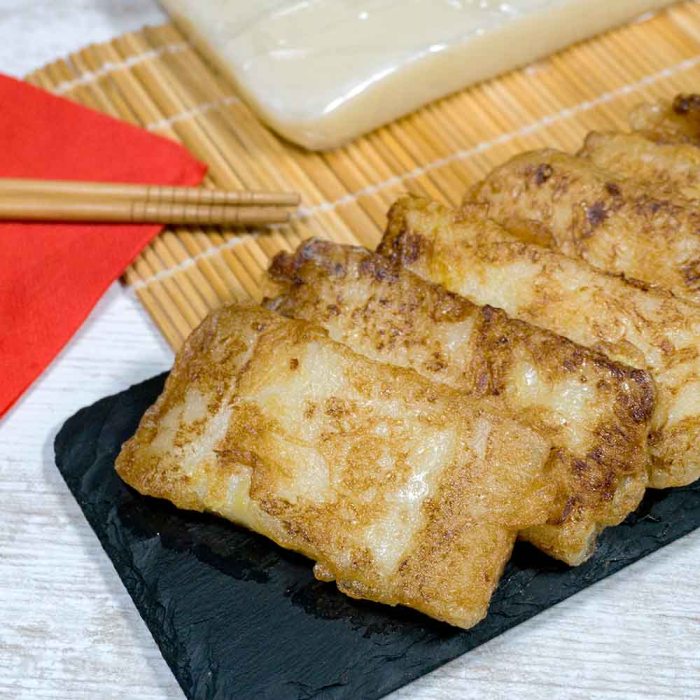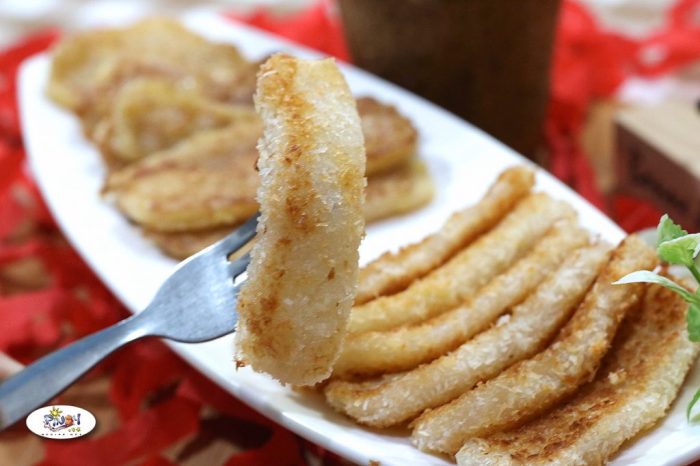What is Tikoy?
How to cook tikoy filipino style – Tikoy, also known as Nian Gao, is a traditional Chinese New Year delicacy that has become a staple in Filipino households during the festive season. This sticky rice cake is made from glutinous rice flour, sugar, and water, and is often sweetened with ingredients like brown sugar, coconut milk, and pandan leaves.
Ingredients for Tikoy Filipino Style: How To Cook Tikoy Filipino Style
To cook Tikoy Filipino style, you will need the following ingredients:
- 1 kg glutinous rice flour
- 1 cup brown sugar
- 2 cups water
- 1 cup coconut milk
- Pandan leaves (optional)
Steps to Cook Tikoy Filipino Style
Here is a step-by-step guide on how to cook Tikoy Filipino style:
Step 1: Prepare the Ingredients, How to cook tikoy filipino style
Gather all the ingredients and equipment needed to make Tikoy. Make sure to have a steamer or a large pot with a steaming rack ready for cooking.
Just like preparing a delicious meal, life requires the right ingredients and methods to create a fulfilling experience. When faced with the task of cooking buffet style ham, it’s important to follow the proper steps to ensure a successful outcome. By visiting how to cook buffet style ham , you will discover valuable insights and techniques to master this culinary art.
Remember, every detail matters in the process of creation, just as every decision shapes our destiny.
Step 2: Mix the Ingredients
In a bowl, combine the glutinous rice flour, brown sugar, water, and coconut milk. Mix well until the sugar is fully dissolved and the mixture is smooth. If desired, add pandan leaves for a fragrant flavor.
Step 3: Steam the Tikoy
Pour the mixture into a greased pan or container suitable for steaming. Place the pan in the steamer or pot with boiling water. Steam the Tikoy for about 45 minutes to 1 hour, or until it is cooked through and firm.
Step 4: Cool and Serve
Once cooked, allow the Tikoy to cool before slicing it into desired shapes. Serve the Tikoy warm or at room temperature as a delicious treat for Chinese New Year or any special occasion.
Tips for Cooking Tikoy Filipino Style
Here are some tips to ensure you make the perfect Tikoy:
- Use high-quality glutinous rice flour for the best texture and taste.
- Adjust the sweetness of the Tikoy by adding more or less sugar according to your preference.
- Adding pandan leaves will give the Tikoy a fragrant aroma and flavor.
- Allow the Tikoy to cool before slicing to prevent it from falling apart.
Conclusion

Learning how to cook Tikoy Filipino style is a delicious way to celebrate Chinese New Year and other special occasions. With the right ingredients and techniques, you can create a homemade Tikoy that is sure to impress your family and friends. Enjoy this traditional sticky rice cake as a sweet treat that symbolizes good luck and prosperity in the coming year.
FAQs (Frequently Asked Questions)
1. How long does it take to steam Tikoy?
Steaming Tikoy typically takes about 45 minutes to 1 hour, depending on the size and thickness of the cake.
2. Can I use regular rice flour instead of glutinous rice flour?
No, glutinous rice flour is essential for making Tikoy, as it gives the cake its sticky and chewy texture.
3. How should Tikoy be stored?
Tikoy can be stored in an airtight container at room temperature for up to a week. It can also be refrigerated or frozen for longer shelf life.
4. Can I add other ingredients to Tikoy?
Yes, you can customize your Tikoy by adding ingredients like nuts, dried fruits, or chocolate chips for a unique twist on this traditional dessert.
Just like preparing a delicious meal, cooking buffet style ham requires patience, skill, and attention to detail. To master this art, you must first understand the importance of choosing the right ham, marinating it with flavorful ingredients, and cooking it to perfection. If you’re looking for guidance on how to cook buffet style ham, check out this helpful guide: how to cook buffet style ham.
5. What is the significance of Tikoy in Chinese culture?

Tikoy is believed to bring good luck and prosperity to those who eat it during Chinese New Year, making it a symbol of unity and abundance in the coming year.
